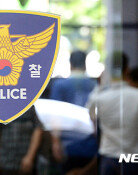S. Korea’s welfare budget exceeds 200 trillion won
S. Korea’s welfare budget exceeds 200 trillion won
Posted September. 01, 2021 07:25,
Updated September. 01, 2021 07:25
South Korea’s welfare budget will exceed 200 trillion won next year. The budget has increased by 50 percent since the current administration was launched four years ago. The total budget will exceed 600 trillion won for the first time. The government passed the 2022 budget plan, including such details. It is necessary to increase the welfare budget due to COVID-19, economic polarization, and low birth rates. However, an excessive increase in the country’s financial spending will lead to a massive amount of taxes to be collected in the future as the national debt amounts to 1,00 trillion won. It is hard to avoid criticism that the government is trying to take credit with the money that people will have to pay back in the end.
In the next year’s welfare budget, cash support, including benefits, pensions, grants, reserves, and subsidies for toddlers to seniors, will increase significantly. While expanded support to care for seniors is necessary, a focus on cash support, rather than welfare infrastructure, in the budget targeted for young adults and middle-aged people is not desirable. While people want stable housing and job markets, the government only put forward temporary solutions. It makes one wonder if the government is trying to cover up its policy failures of soaring housing prices and youth unemployment by providing more cash benefits to people.
South Korea’s debt-to-GDP ratio will go over 50 percent for the first time next year. The total tax revenue as a percentage of GDP, which is the share of taxes, national pensions, health insurance, and occupational health and safety insurance in GDP, is close to 30 percent. This means that one-third of people’s income will have to be paid in taxes and funds if this trend continues. This is partially attributed to the worsening finance of health insurance due to the so-called “Moon Jae-in care” and the excessive extended collection period and increased amount of unemployment benefits.
While the national debt soars, the fiscal rules to control it are not enforced by the National Assembly. The key principle of the fiscal rules is to keep the debt-to-GDP ratio below 60 percent. The government believes that the ratio will reach the limit in 2025. The current administration has increased its spending by eight to nine percent every year while pushing the issue of fiscal stability to the next administration and South Korean people.
Furthermore, prominent presidential candidates are putting forward welfare pledges that would require a massive amount of budget. Governor of Gyeonggi Province Lee Jae-myung promised the ‘basic series,’ which include basic income, basic housing, etc., while former Prime Minister Lee Nak-yon said he would take care of all areas of people’s lives with his ‘new welfare’ pledge. Former Prosecutor General Yoon Seok-youl also pledged to provide housing at cost. It is likely that the next administration will also focus on cash-based welfare benefits.
According to the government, next year’s tax revenues will increase by dozens of trillion won. However, there are many variables expected, including COVID-19, global interest rate increase, and hegemonic race between the U.S. and China. It is risky to take on debt in hopes of uncertain revenues. It is also inconsistent for the government to suspend loans for living expenses in order to reduce household debt while taking on huge national debt to increase spending. People know well that money spent before a presidential election will eventually return as taxes.







